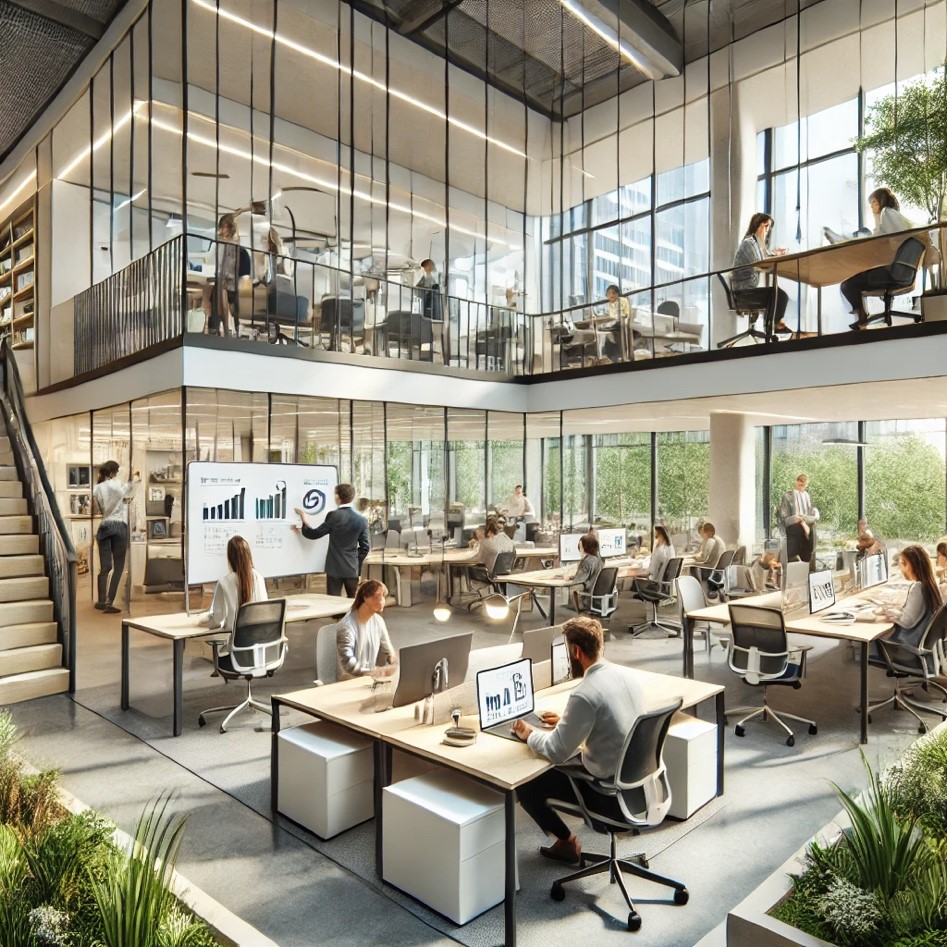Flexibility: The Key to an Innovative and Productive Office
The way we design workspaces is evolving, placing flexibility at the heart of modern office environments. Moving away from rigid, traditional layouts, today’s offices are designed to adapt, inspire, and enhance productivity in an ever-changing professional landscape.
Why Flexibility is Essential
Just as the business world is constantly evolving, so too must our workspaces. Flexible office design integrates versatility, collaboration, and efficiency, allowing businesses to meet the diverse needs of their employees. More than just convenience, flexible spaces are proven to boost productivity, engagement, and job satisfaction.
Emerging Trends in Office Design
Today’s workplaces are increasingly designed to support collaboration, creativity, and employee well-being. Several factors are driving this shift:
- The rise of remote and hybrid work models – Offices must now accommodate employees who split time between home and the workplace.
- A focus on work-life balance – Employees value bright, comfortable, and ergonomic spaces that enhance both productivity and well-being.
- Sustainability and workplace wellness – Companies are prioritizing eco-friendly designs, natural lighting, and air quality to foster healthier work environments.
The Benefits of a Flexible Office Space
1. Adaptability to Evolving Needs
A flexible office setup allows businesses to scale up, reorganize, or repurpose space as needs change, ensuring long-term efficiency.
2. Support for Different Work Styles
Employees have diverse ways of working. Offering a mix of open spaces, quiet zones, and collaborative areas helps maximize productivity and accommodates different preferences.
3. Attracting and Retaining Talent
A well-designed, flexible workspace enhances employee satisfaction and engagement, making it a valuable tool for recruiting and retaining top talent.
4. Increased Collaboration and Innovation
Flexibility encourages interaction, allowing teams to share ideas, brainstorm, and collaborate seamlessly in dynamic environments.
5. Cost Efficiency
A well-planned flexible office optimizes space utilization, reducing unnecessary overhead costs and allowing businesses to invest in other growth areas.
6. Enhanced Employee Comfort
Giving employees the ability to personalize their workspace increases motivation, job satisfaction, and overall well-being.
Final Thoughts
Flexibility has become a key factor in designing and optimizing modern workspaces. By embracing adaptable office environments, businesses can create dynamic, efficient, and engaging workplaces that drive success. Choosing flexibility isn’t just about office design—it’s about building a smarter, more resilient, and future-ready workplace.
